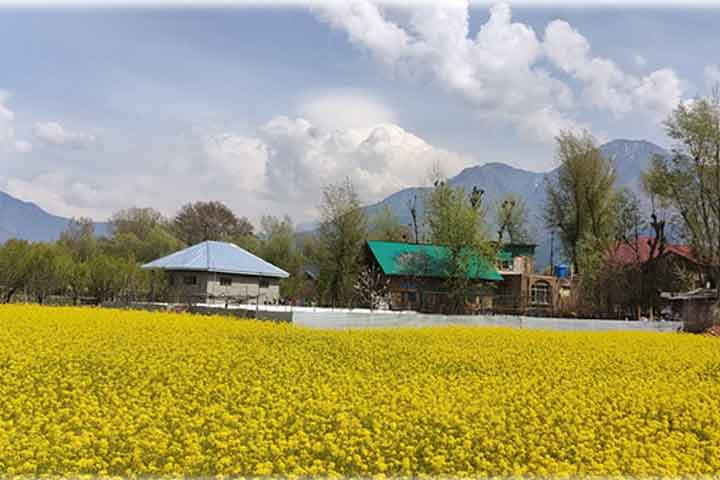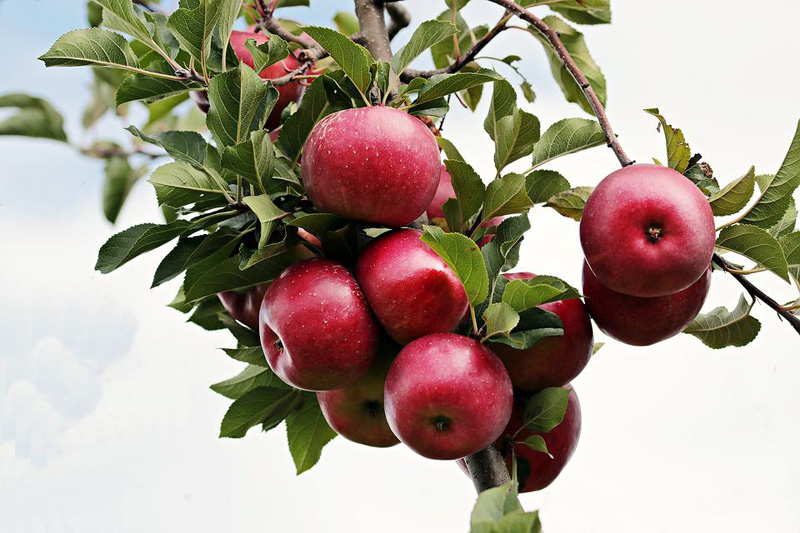Germany's flooded farmers brace for winter frost
After weeks of rain and flooding, a dry spell and frost are welcome, but the problems are not over yet. And it seems unlikely that the already squeezed government budget will be able to help.
The German Weather Service (DWD) announced the arrival of frost in the north of the country on Saturday as large areas of land remain covered in flood water.
While the below-freezing temperatures are expected to help the overloaded dykes hold back the water, experts have warned of the long-term impacts. For already-flooded houses, in particular, standing water freezing and expanding can seriously exacerbate damage.
Frost to protect the dykes
Whether the frost has a positive or negative effect depends on the individual case, Anne Rickmeyer, director of the Lower Saxony Water Management, Coastal Defence and Nature Conservation Agency (NLWKN), told the German press agency DPA.
Frost can firm up the dyke, making it more stable and impermeable to water accumulation.
However, in many places, the water level is still too high and water is pressing against the dykes.
"If relatively warm water is already behind the dyke, then the part of the dyke under the water level won't be able to freeze" meaning that the frost will have no positive effect, Rickmeyer said.
Longer-term problems
A further problem, especially for the farmers who have already been battling weeks of high water, is that the flooding prevents the frost from reaching the ground.
"Frost is normally a blessing for the ground," Christoph Tebbe from the Thünen Institute for Biodiversity in Brunswick told DPA.
The frost normally loosens up the soil, but not if it's underwater. "The ground can't regenerate over winter is too tight" meaning that it cannot take in any more water in the spring which can in turn have a negative impact on crops.
Of course, flooding can also damage buildings, but the frost adds an extra danger.
"When water freezes, it expands by 10%," Norbert Gebbeken, an expert in structural analysis at the Bundeswehr University in Munich, told DPA.
"And this expansion can create such a high pressure that material or building parts can really be destroyed," he explained.
Why has the flooding been so devastating?
The cause of the intense flooding seen throughout Lower Saxony and other parts of northern Germany goes back to the draining of the floodplains along the rivers, according to Christian Wolter from the Leibniz Institute for Freshwater Ecology and Inland Fisheries in Berlin.
"More than 70% of the wetlands along the rivers practically don't exist anymore," he told German public broadcaster Tagesschau. "That of course also means that more than 70% of the historical retention areas, which the water had been able to flow into, are no longer there."
Besides the disappearance of the wetlands, Wolter also pointed to the straightening of waterways, especially the upper reaches of rivers that were straightened to carry rainfall away from the mountains as quickly as possible.
"The straighter the small tributary streams, the faster the water flow downstream," Wolter said. "And when it's very fast, those downstream don't really have a chance to react."
How to stop future flooding
Wolter suggests that instead of building ever bigger and stronger dykes to control the water, instead, it would be preferable to let the rivers and wetlands revitalize and focus on protecting the human infrastructure.
One problem here is that environmental protection and adaption requires money, but Germany's coalition government — which includes the Green Party — recently cut funding for climate protection from €5 billion ($5.48 billion) to €3.5 billion in an attempt to plug the holes in its reduced budget.
This money was earmarked for the protection of ecosystems in forests, moors and wetlands which are also able to store large amounts of CO2, the main driver of man-made climate change which itself is responsible for the more frequent and extreme weather such as wildfires, flooding and drought seen over the past few years.
Justice Minister Marco Buschmann, from the pro-market Free Democrats (FDP) has also ruled out lifting Germany's infamous "debt brake" to free up funds for those farmers hit by the recent flooding.
This can be done if the government declares an emergency situation, as it did following major flooding in the Ahr Valley in particular in 2021 — although Buschmann cited a recent constitutional court ruling and said he was no longer certain whether that decision had been justified based on the court's findings.
"The requirements set by the Federal Constitutional Court are strict. We must not take any legal risks here," he told German newspaper Die Welt am Sonntag. "It's not about being stingy, it's about intergenerational justice."
07 Jan 2024,15:29
















 Live Tv
Live Tv









